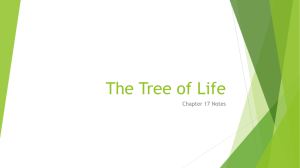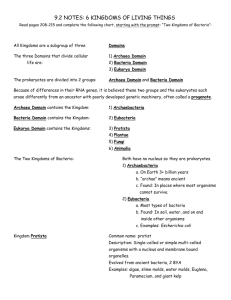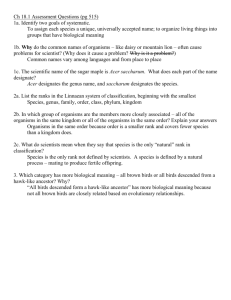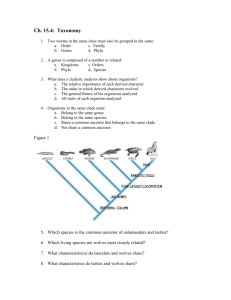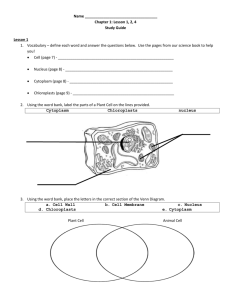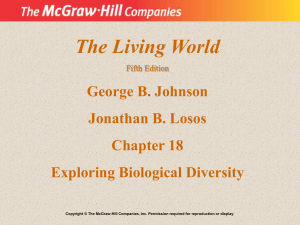Linnaean System & Domains Worksheet: Biology Classification
advertisement
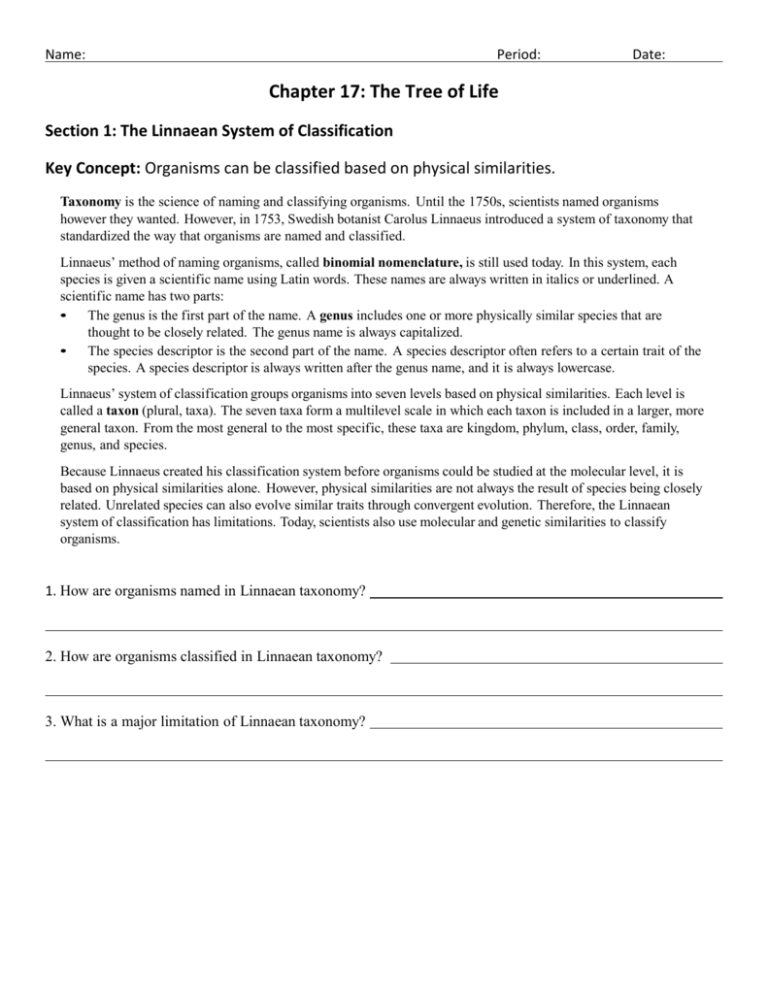
Name: Period: Date: Chapter 17: The Tree of Life Section 1: The Linnaean System of Classification Key Concept: Organisms can be classified based on physical similarities. Taxonomy is the science of naming and classifying organisms. Until the 1750s, scientists named organisms however they wanted. However, in 1753, Swedish botanist Carolus Linnaeus introduced a system of taxonomy that standardized the way that organisms are named and classified. Linnaeus’ method of naming organisms, called binomial nomenclature, is still used today. In this system, each species is given a scientific name using Latin words. These names are always written in italics or underlined. A scientific name has two parts: • The genus is the first part of the name. A genus includes one or more physically similar species that are thought to be closely related. The genus name is always capitalized. • The species descriptor is the second part of the name. A species descriptor often refers to a certain trait of the species. A species descriptor is always written after the genus name, and it is always lowercase. Linnaeus’ system of classification groups organisms into seven levels based on physical similarities. Each level is called a taxon (plural, taxa). The seven taxa form a multilevel scale in which each taxon is included in a larger, more general taxon. From the most general to the most specific, these taxa are kingdom, phylum, class, order, family, genus, and species. Because Linnaeus created his classification system before organisms could be studied at the molecular level, it is based on physical similarities alone. However, physical similarities are not always the result of species being closely related. Unrelated species can also evolve similar traits through convergent evolution. Therefore, the Linnaean system of classification has limitations. Today, scientists also use molecular and genetic similarities to classify organisms. 1. How are organisms named in Linnaean taxonomy? 2. How are organisms classified in Linnaean taxonomy? 3. What is a major limitation of Linnaean taxonomy? Section 4: Domains and Kingdoms Key Concept: The current tree of life has three domains. The tree of life is a model that shows the most current understanding of how living things are related. This model has changed from a two-kingdom system devised by Linnaeus in 1753, to the six-kingdom and three-domain system used today. It will continue to change as scientific research leads to new discoveries about evolutionary relationships. The most recent change in the kingdom system involved prokaryotes, which at one time were grouped together in a kingdom called Monera. Research by biologist Carl Woese revealed that there are two genetically distinct groups of prokaryotes, which have very different cell wall chemistry. This discovery led to the splitting of kingdom Monera into two kingdoms: Bacteria and Archaea. Therefore, the most current tree of life includes six kingdoms: Bacteria, Archaea, Protista, Fungi, Plantae, and Animalia. Woese’s research showed that in terms of genes, bacteria and archaea are actually more different from each other than animals, plants, fungi, and protists are from each other. Based on these differences, Woese proposed that all life be divided above the kingdom level into three domains. These domains are called Bacteria, Archaea, and Eukarya. • The domain Bacteria is made up of single-celled prokaryotes in the kingdom Bacteria. Bacteria are classified by many traits, such as their shape, their need for oxygen, and whether they cause disease. • The domain Archaea is made up of single-celled prokaryotes in the kingdom Archaea. Archaea are known for their ability to live in extreme environments. • The domain Eukarya is made up of all organisms with eukaryotic cells. It includes the kingdoms Protista, Plantae, Fungi, and Animalia. 1. Why is the tree of life considered a work in progress? 2. What kind of research prompted living things to be classified into domains, a grouping above the kingdom level? 3. Name the three domains in the current tree of life, including what kingdoms they contain. 1. 2. 3.

